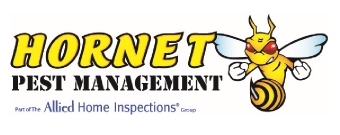Spider Treatments
We use the following methods for Control
- Insecticidal dusts
- Liquid sprays
- Fogging sprays
We treat all
External entry points including weep holes, door and window frames, building perimeters fence lines, pathways, storage shed, gardens, plants, trees, cracks and crevices, drains and any other areas that spiders like to build there webs.
Internal floor perimeters, roof voids, beneath appliances, behind furniture objects that cannot be removed during treatments, so there is no need to remove any stored items prior to treatment.
Using these methods we are completely confident that your property will be spider free and always offer a full 12 month warranty on this type of treatment.
We will also discuss when required about the pruning of any branches and plants that may be in contact with your building that can provide spiders with a bridge across any treated areas.
Facts about Spiders
1. Spiders are arthropods, like insects – they have an exoskeleton that is on the outside of their body instead of the inside (unlike humans).
2. There are around 40,000 known species of spiders.
3. There are a few main differences between spiders and insects, and one of these is the number of legs – all spiders have eight legs.
4. Spider bodies are made up of two main parts – the cephalothorax and the abdomen.
5. Spiders create silk from spinneret glands in their abdomen.
6. Spider silk is extremely strong, and has a number of different uses.
7. One of the ways spiders use silk is to create webs, which catch prey.
8. There are a few different kinds of spider webs, such as orbs, funnels and sheets.
9. Not all spiders catch their prey in webs – some hide and wait for insects to come by.
10. Spiders lay eggs, and store them in an egg sac to keep them safe.
Huntsman Spiders
Despite their often large and hairy appearance, huntsman spiders are not considered to be dangerous spiders. As with most spiders, they do possess venom, and a bite may cause some ill effects. However, they are quite reluctant to bite, and will usually try to run away rather than be aggressive. In houses they perform a useful role as natural pest controllers.
Some people may think of huntsman spiders as ‘tarantulas’. However, they are not related to the large hairy ground dwelling spiders that are normally called tarantulas. Both huntsman spiders and tarantulas are often portrayed as being dangerous and scary. This usually is the case in films or stories that deliberately present spiders in a frightening and unrealistic way. If you feel frightened of huntsman spiders because of this, perhaps you might like to learn more about their true habits and biology. In this way you might be able to reduce your fears
Habitat
Spiders live in almost every habitat on earth. The only places where there are no spiders are the Polar Regions, the highest mountains and the oceans. A few spider species have invaded the ocean’s edge, living in the rock and coral crevices of the intertidal zone
Impact
Spiders are possibly one of the most feared and disliked creatures in Australia. It’s easy to be dramatic about the reasons to get rid of spiders … yet contrary to the common opinion, they are not all dangerous nor are they all unattractive. However, some varieties of spiders can have a serious impact on your home and family.
Prevention
– Keep yards clean and clean of general leave and dirt debris
– Don’t leave toys and shoes laying around in the yard
– Keep bushes and trees trimmed back from the house
– Always check toys, shoes and even outdoor furniture before use, spiders like to hide in all these thing to escape the weather. Keep up to date with your annual pest control treatments
